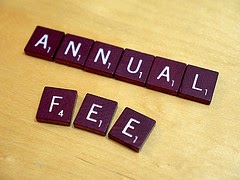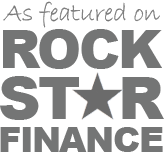 Last week, I wrote about my work in restructuring the money in my 401(k) to move into funds that had a lower expense ratio. When I was done, the weighted average expense ratio, meaning, the amount I actually pay based on the amounts I have invested in each fund was 0.749%, down from the 1% range I had before. That's not too bad, but I wanted to see if I could do better.
Last week, I wrote about my work in restructuring the money in my 401(k) to move into funds that had a lower expense ratio. When I was done, the weighted average expense ratio, meaning, the amount I actually pay based on the amounts I have invested in each fund was 0.749%, down from the 1% range I had before. That's not too bad, but I wanted to see if I could do better.So this week, I took a deeper look. For this analysis, I looked not only at expense ratios, but also the 12b-1 fees (which are advertising fees the company collects to advertise the fund) and the maximum sales charge the fund may charge (which is the maximum amount the fund will charge you when you buy or sell shares). Note that funds can charge the sales charge either when you buy the fund (called a front load), when you sell the fund (called a back load), or continuously while you own the shares (called a greedy money grab). To tell when your fund charges the fee, look at the share type. Type A shares are front loaded, Type B shares are back loaded, and Type C shares bleed you to death by sucking a little bit of blood every year. Obviously, you do not want to buy C shares.
In addition to fund expenses, I also want to make sure my investments are diversified. I want the funds I own to invest in different areas of the economy and the world. This helps protect you from wild fluctuations in the stock market. For example, if you had all of your money invested in one or more mutual funds that invest in real estate in the United States and the real estate market crashed, as it did recently, your investment would lose quite a bit of value. But if instead, you had only part of your money invested in those funds and the rest invested in other areas, such as retail companies in the U.S. and real estate in foreign countries and government issued bonds in the U.S., then the real estate crash would have less of an effect on your overall portfolio.
To analyze all this data, I logged into my 401(k) provider's web site and downloaded the prospectus for each fund they offered. They offer about 50, so it took a while to go through everything. I made a spreadsheet and noted the expenses for each fund, as well as their 5 year and 10 year returns. I also noted what my existing allocations were (after I made the changes I talked about last week, which dropped my overall expense ratio down to 0.749%). Then I looked for different funds that had lower expenses, decent returns, and provide some decent diversification.
I should point out that my 401(k) plan does also offer a range of target date mutual funds. These are mutual funds that invest in a mix of stocks and bonds and change that ratio as the target date approaches. So if your target date (i.e., retirement date) is 30 years away, the funds will initially be more heavily invested in stocks, which are riskier investments, but have the potential for greater returns. As the target date draws closer, the fund will gradually shift it's holdings into more safer bonds, which typically offer a lower return, to preserve capital and insulate you from stock market volatility. I did not bother looking at these in detail, as the fees were on the high side. There are also some problems with these types of funds, which people have written about before.
I ended up with the selections below. The Current column was my previous allocation and the New column is the new allocation I have decided on. Looking at the rightmost column, you can see I am more heavily invested in funds that invest in large and mid cap companies, but I have some small exposure to global investments, fixed income investments, and some balanced funds. Given my age and years to retirement, I'm comfortable with this mix.
 |
| Click to embiggen |
Once I rebalanced my portfolio to my new funds, I re-ran the analysis I did last week, using my new allocation. I managed to drop my weighted average expense ratio from 0.749% to 0.675%! (Note that this analysis only looked at the gross expense ratio and did not factor in 12b-1 fees or sales charges.)
 |
| Click to embiggen |





0 comments:
Post a Comment